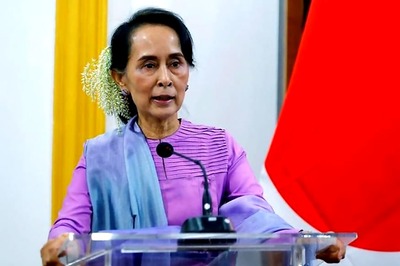
views
New Delhi: Probity watchdog Central Vigilance Commission (CVC) has started examining audit reports of state-run banks and insurance companies to check incidents of fraud and suggest corrective measures, officials said Wednesday.
The move assumes significance with banks reporting large scale fraud cases and the high number of bad loans or non-performing assets, they said.
Vigilance Commissioner T M Bhasin told PTI the CVC is getting a review done of central statutory reports, concurrent auditors' reports and other auditor reports through chief vigilance officers of all public sector banks and insurance companies.
"The same (audit reports) are analysed in the Commission and a corrective action plan is advised for time-bound implementation," he said.
Chief vigilance officers act as a distant arm of the CVC to check corruption and other fraudulent activities in an organisation.
According to government data, various banks have reported an increase in cases of fraud during 2015-16 and 2017-18.
A total of 8,802 frauds have been reported by scheduled commercial banks and public sector banks in 2017-18 as against 7,794 in 2016-17 and 7,482 in 2015-16, according to a written reply given by the Finance Ministry in the Lok Sabha recently.
The Reserve Bank of India (RBI) monitors frauds reported by banks.
For management of fraud risk and to direct the focus of banks to early detection of loan frauds, prompt reporting to RBI and investigative agencies and timely initiation of staff accountability proceedings, RBI has issued a framework for dealing with loan frauds and Red Flagged Accounts (RFA).
Time lines have been given for action incumbent on banks in dealing with loan frauds of Rs 50 crore and above, the ministry said.
The red flagging is done on an information technology platform where all banks report large exposure to entities/individuals so other banks can be forewarned about fraud risk, it said.
In October, the CVC completed a first-of-its-kind analysis of top 100 banking frauds, including those in the jewellery and aviation sectors, and shared its findings with the RBI, the Enforcement Directorate (ED) and the Central Bureau of Investigation (CBI) among others.
The analysis focused on the modus operandi, amount involved, type of lending (viz. consortium or individual), anomalies observed, loopholes that facilitated perpetration of the fraud concerned and the systemic improvements required to plug the gaps in the system and procedures.
The frauds were classified and analysed for 13 sectors -- gems and jewellery, manufacturing and industry, agro, media, aviation, service and project, discounting of cheques, trading, information technology, export business, fixed deposits, demand loan and letter of comfort.
The modus operandi of these top 100 loans has been thoroughly analysed and various loopholes or lapses have been identified, Bhasin had said after releasing a report on the matter.
Based on the findings, various industry specific suggestions for systemic improvement have been given in the final report.
The suggestions have also been sent to the Department of Financial Services and the RBI in order to plug the loopholes observed by the Commission, he said.




















Comments
0 comment